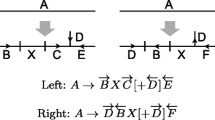Abstract
This study proposes a new topology optimization solution providing designers with choices for feasible stiffener layouts inside large-scale containers of garbage trucks. Firstly, the mathematical expressions of loading conditions inside garbage containers are derived. Then, a growth-based layout optimization framework is built, taking inspiration from the morphology of plant ramifications. The principles of the highly effective but individual design rules of existent leaf venation layout problems are explored and transferred into analytical laws. Based on this, an evolutionary algorithm is developed to simulate the load-adapted growth of stiffener layouts, which provides an approximately homogeneous stress distribution along the surface of self-optimizing structures. Unlike the conventional methods, the new approach needs neither the densest ground structure nor the modification of the existing finite element programs, it is fast, easy to apply and nearly constraint free. Finally, a case study is provided showing how a large-scale container structure can be designed by this extremely intelligent CAD approach.
Similar content being viewed by others
References
Bendsøe M P, Noboru Kikuchi. Generating optimal topologies in structural design using homogenization method. Computer Methods in Applied Mechanics and Engineering, 1988, 71, 197–224.
Hassani B, Hinton E. A review of homogenization and topology optimization I-Homogenization theory for media with periodic structure. Computers and Structures, 1998, 69, 707–717.
Vatanabe S L, Paulino G H, Silva E C N. Design of functionally graded piezocomposites using topology optimization and homogenization-Toward effective energy harvesting materials. Computer Methods in Applied Mechanics and Engineering, 2013, 266, 205–218.
Tcherniak D. Topology optimization of resonating structures using SIMP method. International Journal for Numerical Methods in Engineering, 2002, 54, 1605–1622.
Zhang W, Zhong W, Guo X. An explicit length scale control approach in SIMP-based topology optimization. Computer Methods in Applied Mechanics and Engineering, 2014, 282, 71–86.
Dunning P D, Kim H A. A new hole insertion method for level set based structural topology optimization. International Journal for Numerical Methods in Engineering, 2013, 93, 118–134.
Fujii G, Watanabe H, Yamada T, Ueta T, Mizuno M. Level set based topology optimization for optical cloaks. Applied Physics Letters, 2013, 102, 251106.
Huang X, Xie Y M. A new look at ESO and BESO optimization methods. Structural and Multidisciplinary Optimization, 2008, 35, 89–92.
Zhao F. A nodal variable ESO (BESO) method for structural topology optimization. Finite Elements in Analysis and Design, 2014, 86, 34–40.
Dickinson M H. Bionics: Biological insight into mechanical design. Proceedings of the National Academy of Sciences of the United States of America, 1999, 96, 14208–14209.
Mattheck C. Computer simulation of adaptive biological growth. Journal of Biomechanics, 1992, 25, 780.
Cai K, Chen B S, Zhang H W, Shi J. Stiffness design of continuum structures by a bionics topology optimization method. Journal of Applied Mechanics, 2008, 75, 051006.
Milwich M, Speck T, Speck O, Stegmaier T, Planck H. Biomimetics and technical textiles: Solving engineering problems with the help of nature’s wisdom. American Journal of Botany, 2006, 93, 1455–1465.
Yamazaki K, Koitabashi Y. Stiffener layout generation of plate and shell structures by pseudo-growth technique. Transactions of the Japan Society of Mechanical Engineers Series A, 2001, 67, 1730–1736.
Ding X H, Yamazaki K. Adaptive growth technique of stiffener layout pattern for plate and shell structures to achieve minimum compliance. Engineering Optimization, 2005, 37, 259–276.
Li B T, Hong J, Wang Z L, Liu Z F. An innovative layout design methodology for stiffened plate/shell structures by material increasing criterion. Journal of Engineering Materials and Technology-Transactions of the ASME, 2013, 135, 021012/1–021012/11.
Li B T, Hong J, Yan S N, Liu Z F. Multidiscipline topology optimization of stiffened plate/shell structures inspired by growth mechanisms of leaf veins in nature. Mathematical Problems in Engineering, 2013, 2013, 1–11.
Ren F Y, Liu X G. Probability distribution equations of broken ore displacement in caving system. China Mining Magazine, 1995, 4, 80–84.(in Chinese)
Bai B. Loading Expression, Finite Element Analysis and Optimum Structural Design for Type of NZ5151ZYS Compressed Garbage Truck, Master thesis, Guangxi University, Guangxi, 2006. (in Chinese)
Grigorian M. Biomimicry and theory of structures-design methodology transfer from trees to moment frames. Journal of Bionic Engineering, 2014, 11, 638–648.
Zhao Z L, Huang W X, Li, B W, Chen K X, Chen K F, Zhao H P, Feng X Q. Synergistic effects of chiral morphology and reconfiguration in cattail leaves. Journal of Bionic Engineering, 2015, 12, 634–642.
Maier M, Siege D, Thoben K D, Niebuhr N, Hamml C. Transfer of natural micro structures to bionic lightweight design proposals. Journal of Bionic Engineering, 2013, 10, 469–478.
Zhao L, Ma J F, Wang T, Xing D H. Lightweight design of mechanical structures based on structural bionic methodology. Journal of Bionic Engineering, 2010, 7, 224–231.
Hidetoshi K, Masashi D, Kaori K. Venation pattern of butterbur leaf and its mechanical contribution. Journal of the Japanese Society of Materials Science, 2000, 49, 1318–1323.
Author information
Authors and Affiliations
Corresponding author
Rights and permissions
About this article
Cite this article
Li, B., Yan, S. & Lin, Q. Automated layout design of stiffened container structures based on the morphology of plant ramifications. J Bionic Eng 13, 344–354 (2016). https://doi.org/10.1016/S1672-6529(16)60307-4
Published:
Issue Date:
DOI: https://doi.org/10.1016/S1672-6529(16)60307-4




